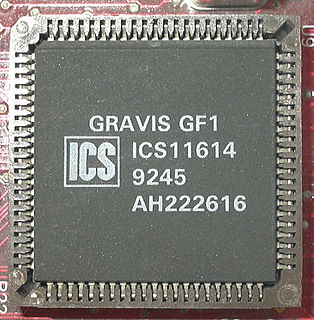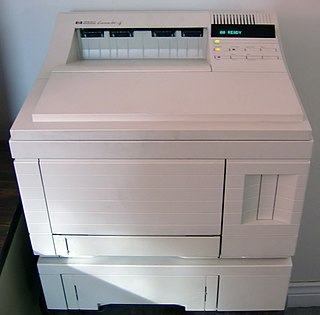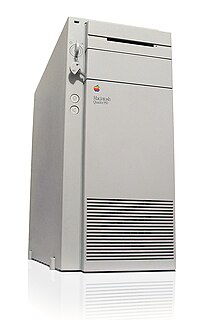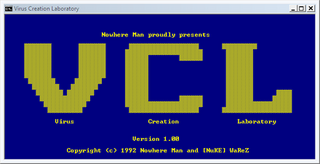 W
W.ae is the country code top-level domain (ccTLD) in the Domain Name System of the Internet for the United Arab Emirates. It is administered by .aeDA which is part of the UAE Telecommunications Regulatory Authority.
 W
WThe Commodore Amiga 4000, or A4000, is the successor of the A2000 and A3000 computers. There are two models: the A4000/040 released in October 1992 with a Motorola 68040 CPU, and the A4000/030 released in April 1993 with a Motorola 68EC030.
 W
W.aq is the Internet country code top-level domain (ccTLD) for Antarctica. It is reserved for organizations that work in Antarctica or promote the Antarctic and Southern Ocean regions. It is administered by Peter Mott of Antarctica Network Information Centre Limited from Russell, New Zealand.
 W
WThe Compaq Concerto was a laptop computer made by Compaq, introduced in 1993. Concerto was the first tablet computer manufactured by Compaq on a large scale, and can be considered a very early form of a 2-in-1 PC.
 W
WDEC 3000 AXP was the name given to a series of computer workstations and servers, produced from 1992 to around 1995 by Digital Equipment Corporation. The DEC 3000 AXP series formed part of the first generation of computer systems based on the 64-bit Alpha AXP architecture. Supported operating systems for the DEC 3000 AXP series were DEC OSF/1 AXP and OpenVMS AXP.
 W
WGravis UltraSound or GUS is a sound card for the IBM PC compatible system platform, made by Canada-based Advanced Gravis Computer Technology Ltd. It was very popular in the demo scene during the 1990s.
 W
WThe HP LaserJet 4 is a group of monochrome laser printers produced in the early to mid-1990s as part of the LaserJet series by Hewlett Packard (HP). The 4 series has various models, including the standard LaserJet 4 for business use, the 4L for personal use and the 4P for small businesses. Additional models included the 4Si model, created as a heavy-duty business printer, and the 4V model, a B-size printer for desktop publishing and graphic artists. There are also PostScript variants of these machines with the '4M' designation, where M stands for, but is not limited to, usage with an Apple Macintosh. Hewlett Packard also released an upgraded version of the LaserJet 4/4M known as the 4 Plus ('4+')/4M Plus ('4M+').
 W
WJPEG is a commonly used method of lossy compression for digital images, particularly for those images produced by digital photography. The degree of compression can be adjusted, allowing a selectable tradeoff between storage size and image quality. JPEG typically achieves 10:1 compression with little perceptible loss in image quality. Since its introduction in 1992, JPEG has been the most widely used image compression standard in the world, and the most widely used digital image format, with several billion JPEG images produced every day as of 2015.
 W
WThe Macintosh IIvi is a personal computer designed, manufactured, and sold by Apple Computer, Inc. from September 1992 to February 1993. The IIvi was introduced alongside the Macintosh IIvx, using a slower processor and no floating point unit. The Performa 600 models, meanwhile, are the IIvi with the IIvx's 32 MHz CPU. The IIvi was, on some benchmarks, faster than the IIvx. It is the only model in the Macintosh II family to be branded as a Performa.
 W
WThe Macintosh IIvx is a personal computer designed, manufactured and sold by Apple Computer, Inc. from October 1992 to October 1993. It is the last of the Macintosh II family of Macintosh computers. The IIvx was introduced at the same time as the Macintosh IIvi, Performa 600 and Performa 600CD, with all four models using the same new metal case design. Like the Performa 600CD, the IIvx could be equipped with an internal double-speed CD-ROM drive.
 W
WThe Macintosh LC II is a personal computer designed, manufactured, and sold by Apple Computer, Inc. from March 1992 to March 1993. The LC II is an update to the original Macintosh LC, replacing its Motorola 68020 processor with a 68030 and increasing the onboard memory to 4 MB. The LC II was priced at US$1,699, fully $800 less than the original LC when it was introduced.
 W
WThe Macintosh Quadra 950 is a personal computer designed, manufactured and sold by Apple Computer, Inc. from March 1992 to October 1995. It replaced the Quadra 900 that was introduced several months earlier, increasing the CPU clock rate of its 68040 CPU from 25 MHz to 33 MHz, and improving the graphics support. The two computers were otherwise identical, including the price. With a Macintosh Processor Upgrade Card installed, this computer is known as the Power Macintosh 950.
 W
WThe Motorola International 3200 was the first digital hand-held mobile telephone introduced in 1992, along with the more compact 5200, 5080, 7200 and 7500 "flip phones" introduced in 1994. It was preceded by the International 1000 and 2000 GSM phones, quite big, and although being the first GSM portable phones, they were not GSM certified, therefore couldn't be officially connected to the network.
 W
W.pk is the designated Internet country code top-level domain (ccTLD) for Pakistan. PKNIC is the only organization endorsed by the Government of Pakistan to undertake the administration of 'pk' domain names. PKNIC is a non-profit making, non-statutory, member-based corporation established in June 1992.
 W
WThe PowerBook Duo is a line of subnotebooks manufactured and sold by Apple Computer from 1992 until 1997 as a more compact companion to the PowerBook line. Improving upon the PowerBook 100's portability, the Duo came in seven different models. They were the Duo 210, 230, 250, 270c, 280, 280c, and 2300c, with the 210 and 230 being the earliest, and the 2300c being the final incarnation before the entire line was dropped in early 1997.
 W
WThe Super NES Mouse, sold as the Super Famicom Mouse in Japan, is a peripheral created by Nintendo for the Super Nintendo Entertainment System. It was first released on July 14, 1992 in Japan, in August of 1992 in North America, and in December 10, 1992 in Europe. Originally designed for use with the game Mario Paint, the Super NES Mouse was sold in a bundle with the game and included a plastic mouse pad. Soon after its introduction, several other titles were released with the Mouse support.
 W
WThinkPad is a line of business-oriented laptop computers and tablets designed, developed and marketed by Lenovo. It was initially sold by IBM until 2005. ThinkPads have a distinct black, boxy design language, inspired by a Japanese bento lunchbox, which originated in 1990 and is still used in some models.
 W
WThe ThinkPad W-series laptops from Lenovo are described by the manufacturer as being "mobile workstations", and suit that description by being physically on the larger side of the laptop spectrum, with screens ranging from 15" to 17" in size. Most W-series laptops offer high-end quad-core Intel processors with an integrated GPU as well as an Nvidia Quadro discrete GPU, utilizing Nvidia Optimus to switch between the two GPUs as required. Notable exceptions are the W500, which has ATI FireGL integrated workstation-class graphics, and the W550s, which is an Ultrabook-specification laptop with only a dual-core processor. The W-series laptops offer ISV certifications from various vendors such as Adobe Systems and Autodesk for CAD and 3D modeling software.
 W
WThe TurboDuo is a fourth-generation video game console developed by NEC Home Electronics and Hudson Soft for the North American market. The TurboDuo was test-marketed in Los Angeles in October 1992, before a nationwide rollout in May 1993. It is the North American version of the Japanese PC Engine Duo game console which was released in September 1991.
 W
W.ua is the Internet country code top-level domain (ccTLD) for Ukraine. To register first level (example) domainname.ua, the exact trademark is required. It is not required for second level domains.
 W
WThe VESA Local Bus was a short-lived expansion bus introduced during the i486 generation of x86 IBM-compatible personal computers. Created by VESA, the VESA Local Bus worked alongside the then dominant ISA bus to provide a standardized high-speed conduit intended primarily to accelerate video (graphics) operations. VLB provided a standardized "fast path" that add-in (video) card makers could tap for greatly accelerated memory-mapped I/O and DMA, while still using the familiar ISA bus to handle basic device duties such as interrupts and port-mapped I/O.
 W
WVideo for Windows (VfW) is a multimedia framework developed by Microsoft that allows Windows to play and encode digital video.
 W
WThe Virus Creation Laboratory, or VCL, as it is known, was one of the earliest attempts to provide a virus creation tool so that individuals with little to no programming expertise could mass-create computer viruses. VCL required a password for access, which was widely published alongside VCL. The password was "Chiba City", a likely reference to the William Gibson novel "Neuromancer."
 W
WThe Zilog Z180 eight-bit processor is a successor of the Z80 CPU. It is compatible with the large base of software written for the Z80. The Z180 family adds higher performance and integrated peripheral functions like clock generator, 16-bit counters/timers, interrupt controller, wait-state generators, serial ports and a DMA controller. It uses separate read and write strobes, sharing similar timings with the Z80 and Intel processors. The on-chip memory management unit (MMU) has the capability of addressing up to 1 MB of memory. It is possible to configure the Z180 to operate as the Hitachi HD64180.